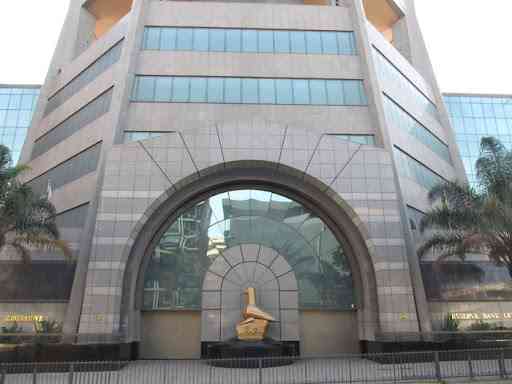
I WAS very honoured to visit Zimbabwe as a speaker at the National Competitiveness Conference hosted by The Eastern Caucus. I was invited to speak on lessons learnt from different countries. Running a management consulting firm — beed, with offices in Kathmandu, Nepal and Kigali, Rwanda, a think tank — Nepal Economic Forum and representing a US strategic consulting firm — Bower Group Asia, provides diverse perspectives.
My recent book Nepal 2043, published by Penguin Random House, is a road map for prosperity for Nepal to graduate to a high income country by 2043, when our local calendar Bikram Sambat turns 2100.
The book is not only a road map for Nepal, but has been written as a playbook for emerging markets and developing economies such as Zimbabwe.
There are four mega trends that will shape the world in the next decades — climate change, geopolitics, movement of people and technology.
I delve in into them to find ways to create opportunities and push for inclusive economic transformation that will also see societies transform.
In this opinion piece, I will introduce Nepal and share a few things that Zimbabwe can learn from the Nepal journey.
First of all, when I was talking to people in Harare and Victoria Falls, they were surprised to learn Nepal has 30 million people. Nearly double the size of Zimbabwe! However, Zimbabwe in terms of land area is double of Nepal.
Both economies have US$44 billion GDP that makes Zimbabwe per capital income double that of Nepal.
- Vital lessons for Zimbabwe from Kathmandu, Nepal
Keep Reading
However, when I travelled through the different neighborhoods of Harare and learnt about the country, it is very interesting to see how population density, income inequality and colonial challenges make the look and feel of the country different.
Nepal was never colonised but ruled by an autocratic dynasty for 240 years.But since restoration of democracy in 1990 and the end of monarchy in 2006, there has been great stride in equitable growth.
Economic equity requires empowered local governments and vibrant democracies.
Despite the changes in government and semblance of political instability, Nepal’s democratic practices have run deep and across the country with economic development moving beyond the national capital.
Nepal’s economic transformation in the past two decades is a case study for many countries on how private sector -led growth can push a country’s economy ahead despite the challenges of crony capitalism-presence of cartels that push for protectionism.
Nepal’s GDP grew from US$7 billion in 2004 to US$44 billion in 2024.
Government revenues swelled, making it the highest tax to GDP ratio in South Asia.
The macro-economic data tells good stories with low debt to GDP ratio, balance of payment surplus and a foreign exchange reserve of nearly 50% of GDP.
It is very different from Zimbabwe. Private banking has flourished with private credit exceeding GDP and has grown 20 times in the past twenty years! The stock market, with complete de-materialisation of security and paperless trading, has led to a market capitalisation of nearly 80% of GDP.
The stock market has grown 56 times in the past 20 years. Remittances have driven the economy from around US$1 billion in 2000 to US$12 billion in 2024, with informal remittances estimate to be anything between 30% to 100% of the formal remittances.
Nepali diaspora is in 180 countries bringing back money, skills and the global mindset that is transforming the country. With remittances becoming an important source in Zimbabwe, it will be important to work on how to manage the funds, formalise them and ensure safe migration at least costs.
Stable currency is key
Till 1965, the Indian Rupee was widely used in Nepal despite having its own currency. Thereafter, the Nepali Rupee became legal tender.
The Indian Rupee, while accepted in border areas, slowly got relegated to be used in limited ways. The advent of tourists brought in foreign exchange to Nepal and foreign exchange started to be converted to Nepali rupees and vice-versa for tourists.
However, the Nepali Rupee was pegged to the Indian Rupees. Since 1994, it is Nepali Rupees 1,60 to one Indian Rupee. Nepal has been able to ride on the growth of the Indian economy. For instance, the Pakistan Rupee and the Nepali Rupee was same to the US dollar ten years ago. Now the Nepali Rupee is 140 to the dollar while Pakistan crossed 300.
This was not due to its own macro-economic fundamentals, but more being pegged to the Indian Rupees! The Nepali Rupee and the Indian Rupee are freely convertible and now the QR codes of digital payment platforms of India can be used in Nepal and agreements of reciprocity have been signed.
The Nepali currency has devalued against the dollar just around 3% in the past two decades
Digitalisation
When I was travelling to remote villages in Nepal, village leaders told me how today having a telecoms tower was more important than having roads.
This was purely on the fact the connectivity ensures people can be in touch with their families who are not living with them and be able to transact money on the phone, trade on the stock exchange and do small businesses of buying and selling.
This has been a big area of transformation.
Digital payment platforms, ride-hailing apps, different social media platforms that can be downloaded for free, delivery apps and the trust on the system has changed.
There is now a government app — Nagarik App (Citizen’s App) where one can store government-related cards such as Identity cards driving licences, passports, Tax cards and also transact through the same.
In this regard, I have been a great fan of Rwanda, where the Irembo platform has made government and its services go digital with citizen’s being able to access services through an app.
In countries such as Nepal, where 50% of the population is under 25 and in countries that include Zimbabwe and Rwanda where a third of the population is under 35, it is important to move towards digitalisation.
Zimbabwe benefits from being next door to South Africa where innovation is happening.
Our work at beed in Cambodia, Myanmar, Laos and Nepal on Access To Finance was in partnership with institutions such as the UNCDF regional office in South Africa and Cenfri, based out of Cape Town.
Land linked and not landlocked
I always refer to Nepal as a land linked country that is linked to 2,8 billion people, 1,4 billion in China and 1,4 billion in India.
Nepal’s market is not only the 30 million people, but around 400 million people within six hours driving distance from Nepali borders and another 180 million people in Bangladesh separated by 21 kilometres of land in India. I have been pushing for a mindset shift from being “mindlocked” but rather look at the vast expanse of the market and its potential.
For Zimbabwe, the market is over 100 million people when you consider countries it is landlinked with.
When technology, communication platforms and infrastructure can easily connect people, it is the transformation of mindset that is required.
Perhaps this is the starting point in our mindset that I keep propagating in Nepal to be able to see one’s strategic position in the region
Shakya is the founder CEO of Beed, an international management consulting firm with offices in Kathmandu, Nepal and Kigali, Rwanda. He has been dubbed as Nepal’s CEO — Chief Eternal Optimism for his positive perspectives in his books, Unleashing Nepal, Unleashing the Vajra and Nepal 2043 all published by Penguin Random House. He is also Chair of Nepal Economic Forum, Nepal’s leading economic think tank. www.sujeevshakya.com. These weekly New Perspectives articles published in the Zimbabwe Independent are coordinated by Lovemore Kadenge, an independent consultant, managing consultant of Zawale Consultants (Private) Limited, past president of the Zimbabwe Economics Society (ZES) and past president of the Chartered Governance & Accountancy Institute in Zimbabwe (CGAIZ). Email — [email protected] or Mobile No. +263 772 382 852.











